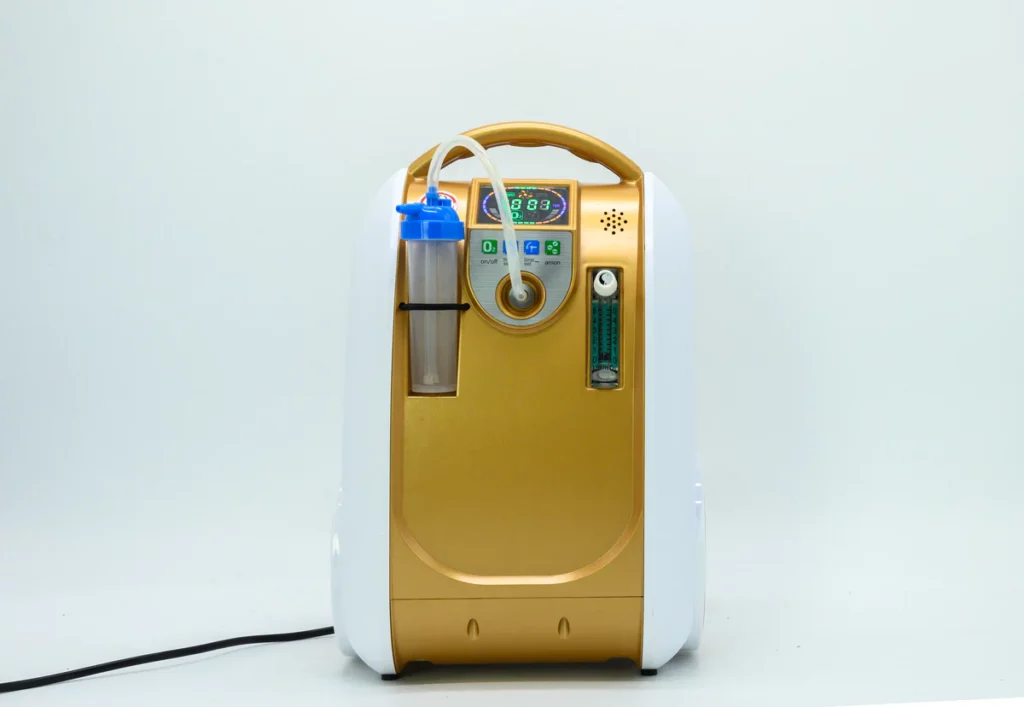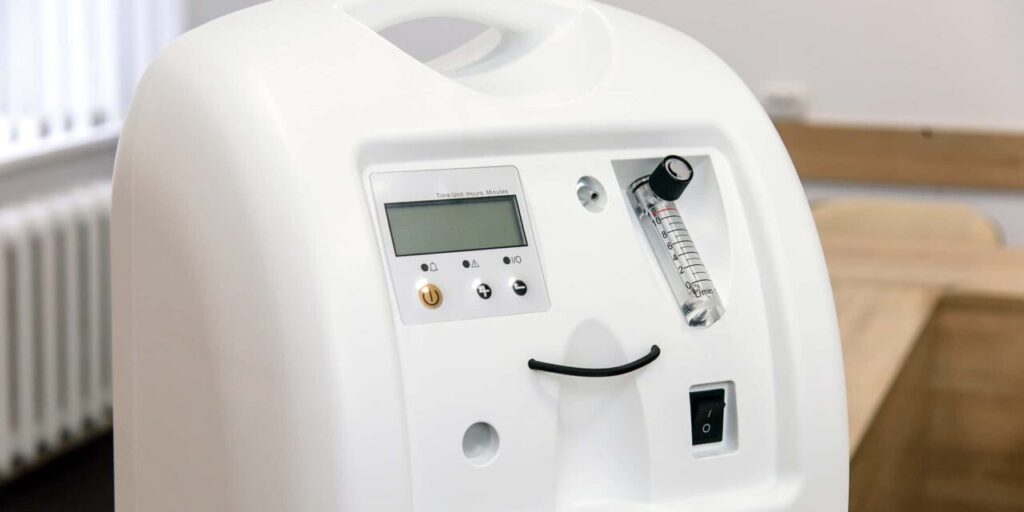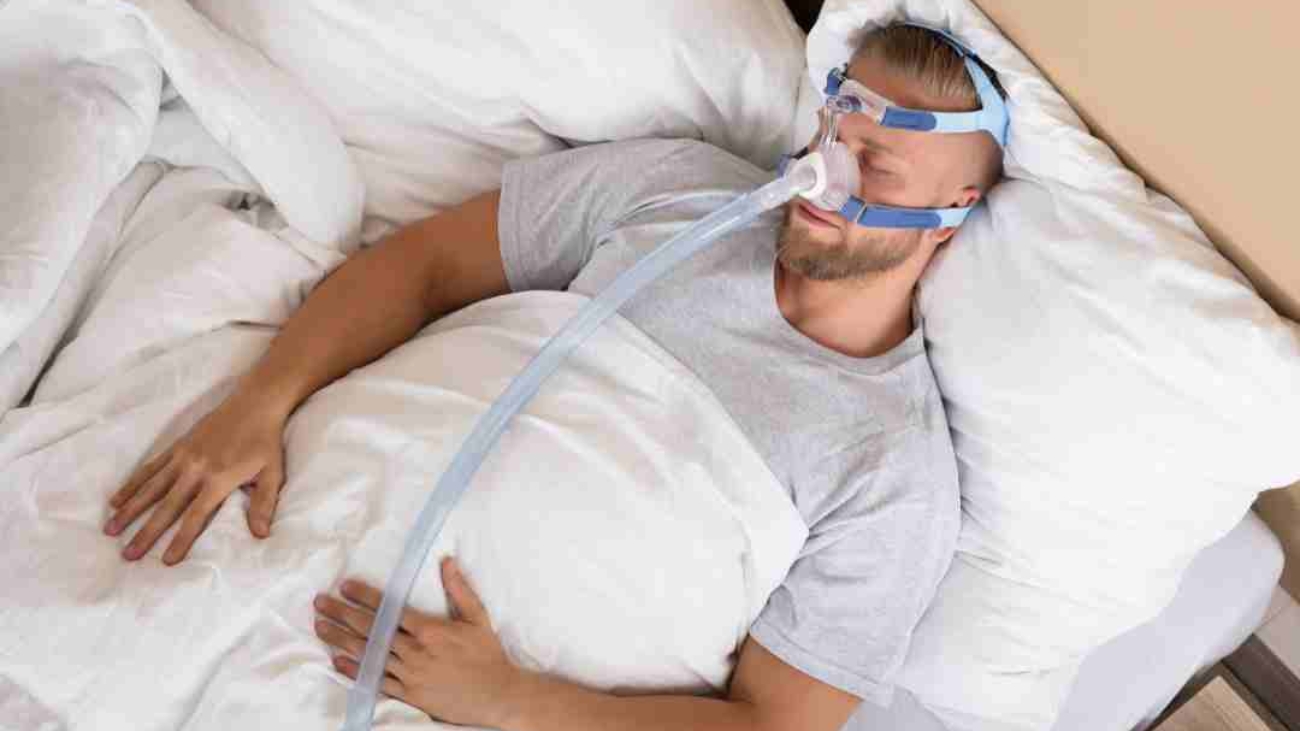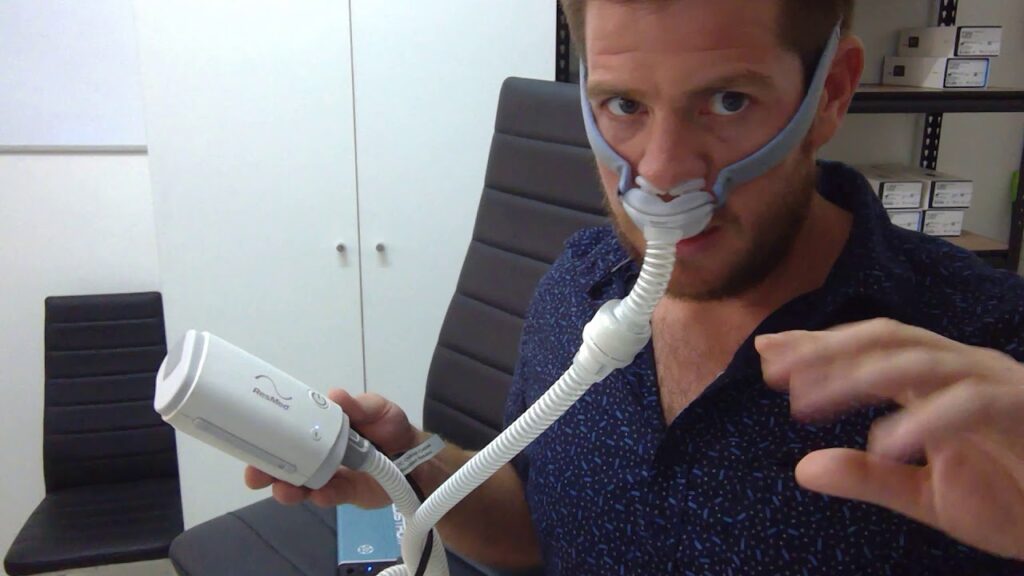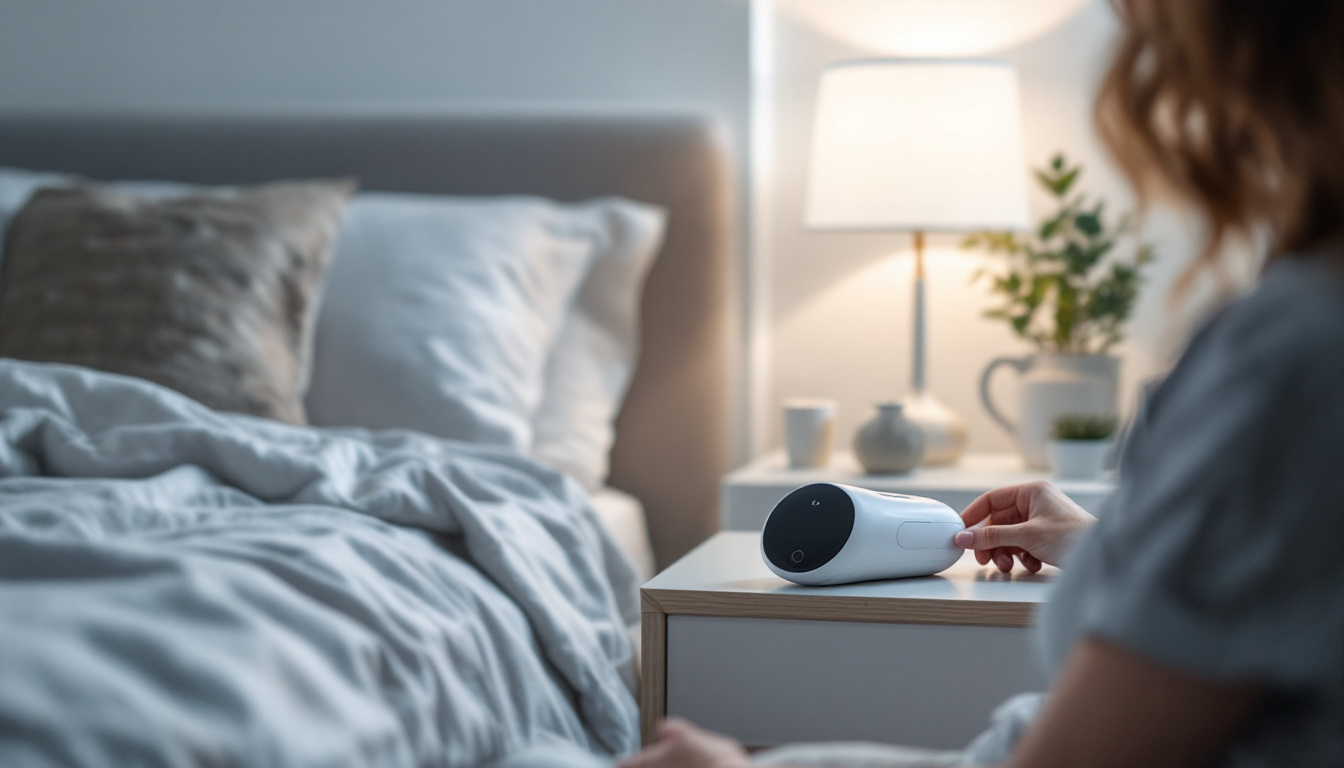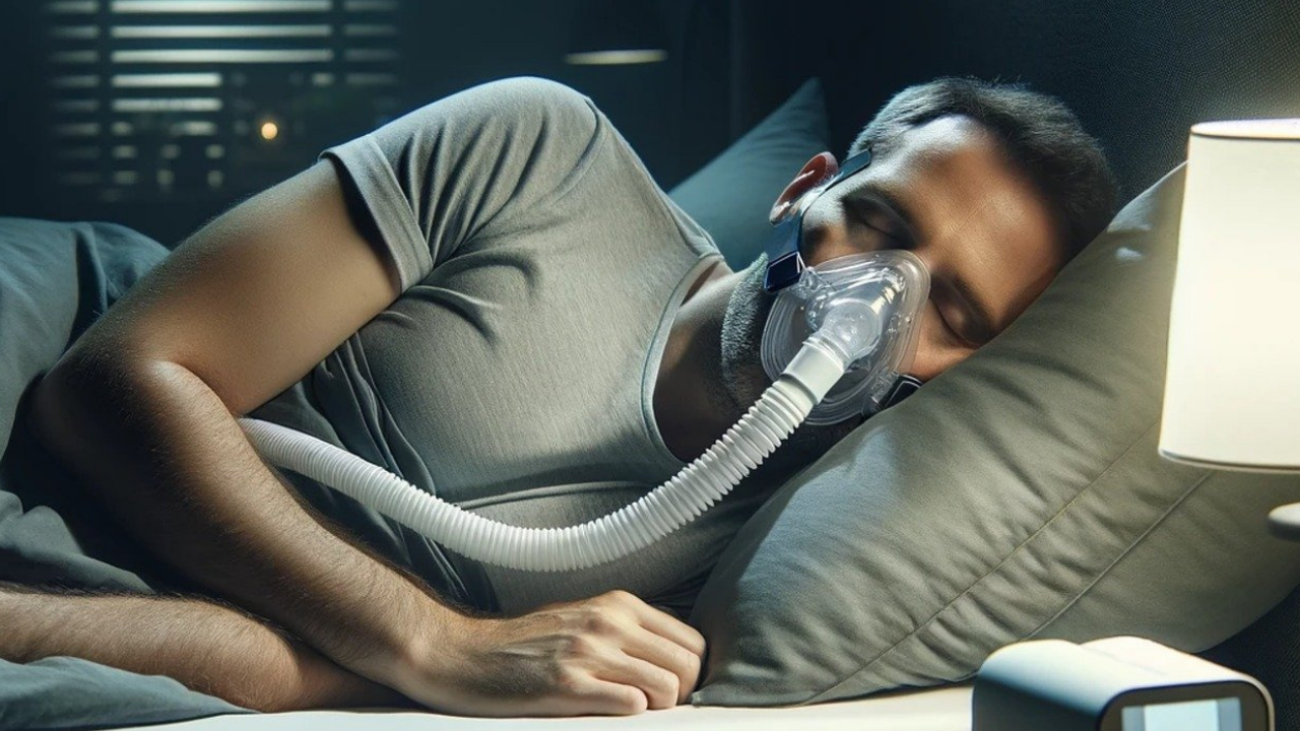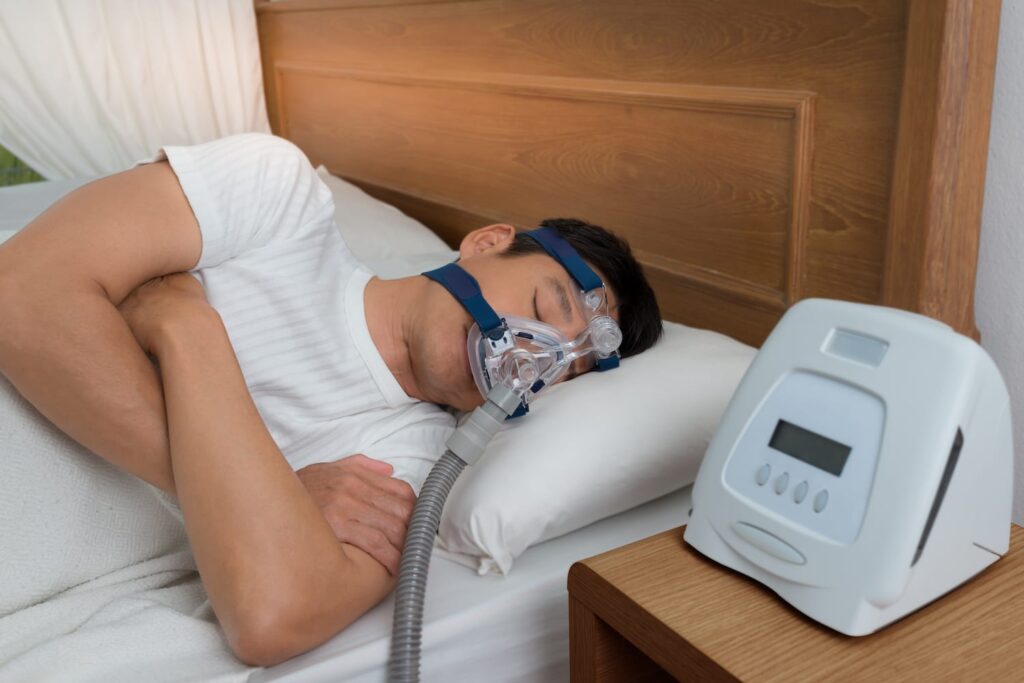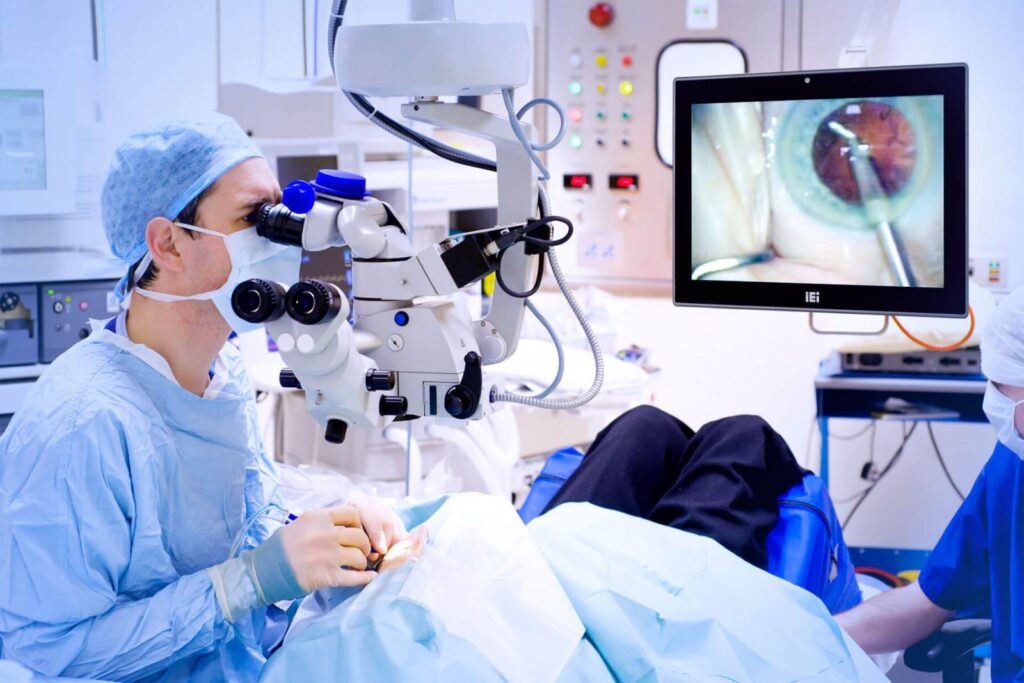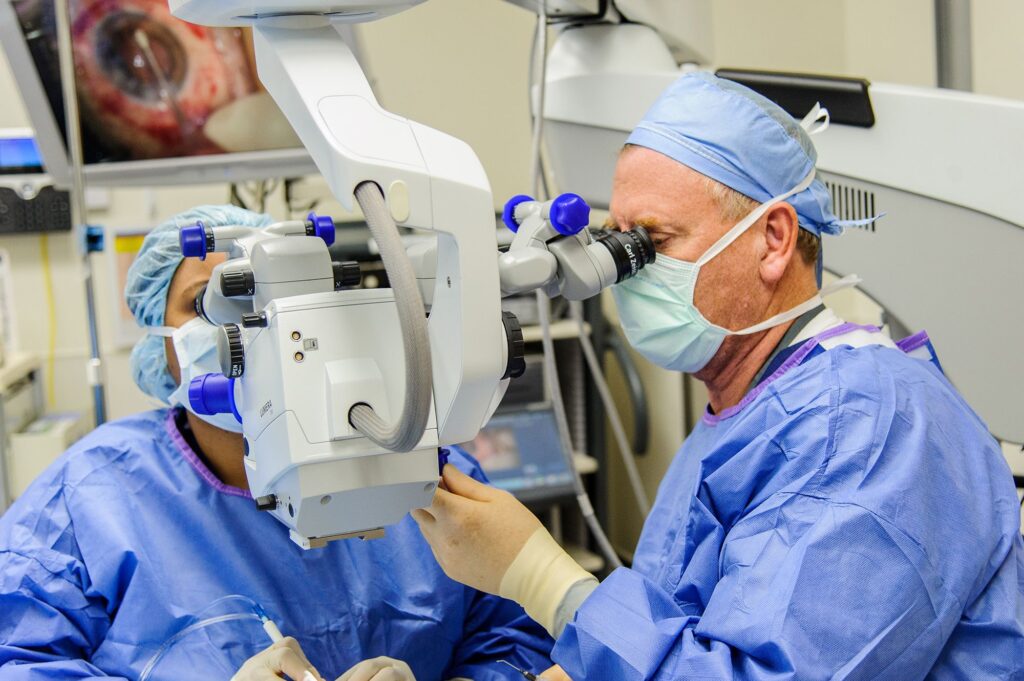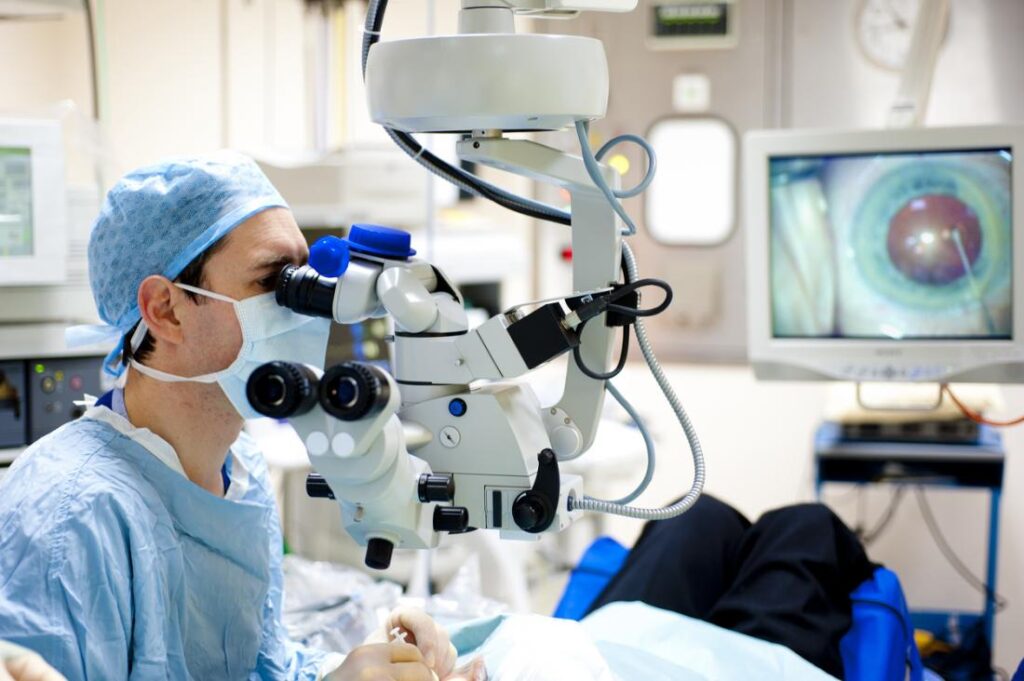What Are CPAP Machines and How Do They Work?
CPAP machines deliver a steady stream of pressurized air through a mask to keep airways open during sleep. These medical devices are the gold standard treatment for obstructive sleep apnea, a condition where throat muscles repeatedly relax and block the airway during sleep.
The technology behind CPAP therapy centers on continuous positive airway pressure. This pressurized air acts as a pneumatic splint, preventing the soft tissues in the throat from collapsing inward. When airways remain open throughout the night, patients experience uninterrupted breathing and better sleep quality.
Core Components of CPAP Systems
A complete CPAP setup includes three essential elements:
- Pressure generator: The main unit that draws in room air and pressurizes it to prescribed levels
- Heated humidifier: An optional but commonly included component that adds moisture to prevent dryness
- Mask interface: A sealed mask that delivers pressurized air, available in nasal, full-face, or nasal pillow designs
- Tubing: Flexible hose connecting the generator to the mask
The pressure generator calibrates airflow based on physician-prescribed settings, typically measured in centimeters of water pressure (cmH2O). Most machines operate within a range of 4 to 20 cmH2O, with the exact pressure tailored to each patient’s needs.
Primary Conditions Treated
Obstructive sleep apnea represents the primary indication for CPAP therapy. Patients with OSA experience repeated breathing interruptions throughout the night, leading to:
- Fragmented sleep patterns
- Daytime fatigue and drowsiness
- Increased cardiovascular risks
- Cognitive impairment
CPAP therapy may also benefit patients with:
- Central sleep apnea (in certain cases)
- Complex sleep apnea syndrome
- Obesity hypoventilation syndrome
The distinction between CPAP therapy and oxygen supplementation becomes critical here. CPAP addresses mechanical airway obstruction rather than low blood oxygen levels. Patients whose airways collapse during sleep need positive airway pressure to maintain patency, not necessarily additional oxygen.
What Are Oxygen Machines and How Do They Function?
Oxygen machine, also known as oxygen concentrators, deliver supplemental oxygen to patients whose blood oxygen levels fall below healthy ranges. These medical devices extract oxygen from room air, concentrate it to therapeutic levels (typically 87-95% purity), and deliver it directly to patients through nasal cannulas or masks.
The concentration process works through molecular sieve technology or membrane systems. Room air contains approximately 21% oxygen, but concentrators filter out nitrogen and other gases, producing oxygen-enriched air. The device pulls ambient air through filters, compresses it, and passes it through zeolite beds that absorb nitrogen molecules. The purified oxygen then flows to the patient at prescribed rates measured in liters per minute (LPM).
Who Needs Oxygen Therapy?
Patients with hypoxemia treatment needs—those experiencing dangerously low blood oxygen saturation—benefit from oxygen concentrators. Several conditions create this requirement:
- Chronic Obstructive Pulmonary Disease (COPD): Damaged lung tissue struggles to transfer oxygen into the bloodstream, requiring long-term supplemental oxygen
- Pneumonia: Inflamed, fluid-filled lung tissue temporarily reduces oxygen absorption capacity
- Pulmonary fibrosis: Scarred lung tissue impairs oxygen exchange
- Heart failure: Weakened heart function leads to fluid buildup in lungs, reducing oxygen transfer
- Severe asthma: Chronic inflammation narrows airways and reduces oxygen intake
Doctors prescribe oxygen therapy when blood oxygen saturation consistently drops below 88-90% at rest or during activity.
Portable vs. Stationary Oxygen Concentrators
There are two main types of oxygen concentrators: stationary and portable.
Stationary Oxygen Concentrators
Stationary concentrators remain in one location, typically weighing 30-50 pounds. These units deliver continuous flow oxygen at higher rates (5-10 LPM) and suit patients who spend most time at home. They plug into standard electrical outlets and provide unlimited oxygen as long as power remains available.
Portable Oxygen Concentrators
Portable concentrators weigh 3-10 pounds and run on rechargeable batteries, enabling patient mobility. Most portable units use pulse-dose delivery, releasing oxygen bursts only during inhalation rather than continuous flow. This conserves battery life while still meeting the patient’s needs during activities such as walking or exercising.
How Do CPAP Machines Differ From Oxygen Machines in Therapy Goals?
What problem does each therapy address?
CPAP machines keep the airways open by stopping them from collapsing during sleep, while oxygen machines increase the level of oxygen in the blood of patients who don’t have enough oxygen in their bloodstream. These are two different ways of treating respiratory conditions that focus on different physical issues.
The main difference is in the problem being treated:
- CPAP therapy deals with mechanical blockage where the airways close during sleep, stopping airflow even though the air has normal oxygen levels
- Oxygen therapy deals with low blood oxygen levels where the airways stay open but the lungs can’t properly oxygenate the blood due to disease or damage
Does the type of breathing problem determine which therapy works?
Yes, the specific breathing issue determines which therapy is chosen. A patient with obstructive sleep apnea has repeated airway blockages that CPAP fixes by using pressurized air as a splint. On the other hand, someone with COPD may breathe normally but needs concentrated oxygen because their damaged lungs can’t get enough oxygen from regular air.
Why can’t these therapies replace each other?
Each therapy targets a specific physiological problem. Using oxygen therapy for airway blockage won’t stop it from collapsing, just like CPAP pressure won’t raise blood oxygen levels when lung function is impaired. Proper diagnosis ensures that patients get the right treatment for their particular condition.
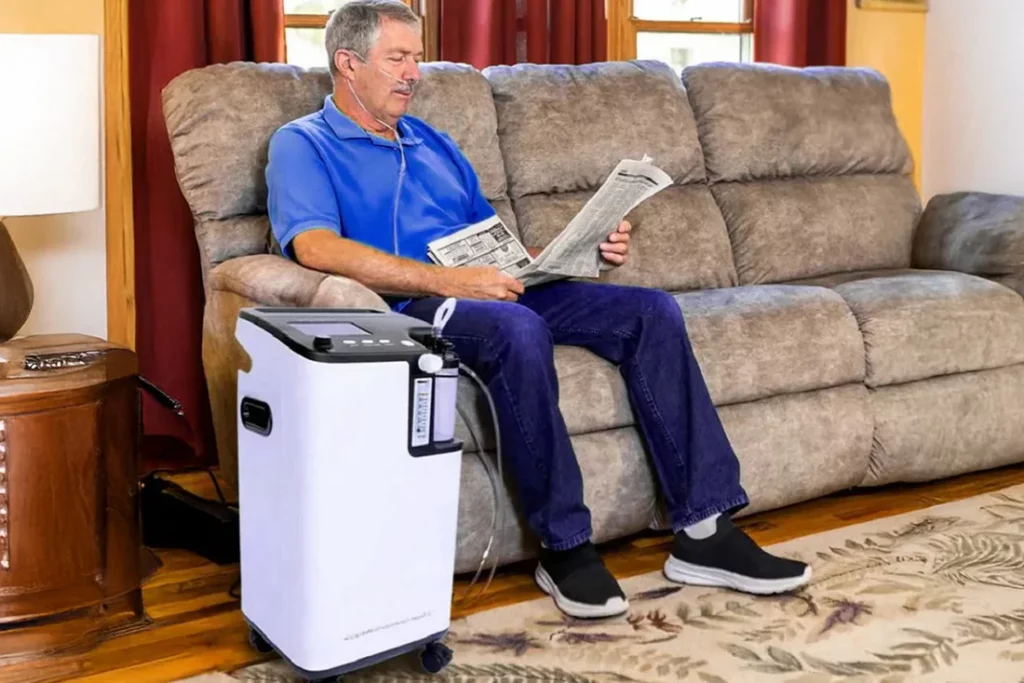
When Is CPAP Therapy Prescribed Instead of Oxygen Therapy?
What conditions lead doctors to prescribe CPAP over oxygen therapy? CPAP therapy is prescribed when obstructive sleep apnea treatment becomes necessary, meaning the patient experiences repeated airway collapse during sleep. Doctors diagnose OSA through sleep studies that reveal breathing interruptions caused by physical blockage rather than insufficient oxygen in the air.
The airway obstruction diagnosis distinguishes CPAP candidates from oxygen therapy patients. When the upper airway tissues relax and block airflow during sleep, the body needs mechanical support to keep passages open. Blood oxygen levels may drop during these episodes, but the root cause is physical obstruction, not lung disease or oxygen deficiency.
Therapy prescription criteria for CPAP include:
- Apnea-Hypopnea Index (AHI) of 5 or more events per hour
- Documented airway collapse during sleep studies
- Symptoms like loud snoring, gasping during sleep, or daytime fatigue
- Normal lung function with adequate oxygen exchange when airways remain open
Pressure adjustments follow a personalized approach based on patient response. Initial settings typically range from 4 to 20 cm H2O, with titration studies determining the optimal pressure needed to eliminate apnea events. Patients return for follow-up assessments where doctors review compliance data and adjust settings to maximize comfort while maintaining airway patency throughout sleep cycles.
When Is Oxygen Therapy Preferred Over CPAP Treatment?
Oxygen therapy becomes the primary treatment when patients experience hypoxemia—persistently low blood oxygen levels—rather than airway obstruction. Doctors prescribe supplemental oxygen usage for conditions like chronic obstructive pulmonary disease (COPD), pulmonary fibrosis, severe pneumonia, and heart failure where the lungs cannot adequately oxygenate blood.
Understanding Chronic Lung Diseases
Chronic lung diseases are conditions that affect the lungs and airways over a long period, leading to difficulty in breathing and reduced airflow. These diseases often require ongoing management to ensure optimal lung function and overall well-being.
Some common examples of chronic lung diseases include:
- Chronic obstructive pulmonary disease (COPD): A progressive lung disease characterized by airflow limitation, usually caused by smoking or long-term exposure to irritants.
- Pulmonary fibrosis: A condition where lung tissue becomes scarred and thickened, making it difficult for the lungs to function properly.
- Severe pneumonia: An infection that inflames the air sacs in one or both lungs, causing symptoms such as cough, fever, and difficulty breathing.
- Heart failure: A condition where the heart is unable to pump blood effectively, leading to fluid buildup in the lungs and impaired oxygen exchange.
How Oxygen Therapy Helps
In these chronic lung conditions, although the airways remain open, there is a problem with gas exchange at the alveolar level—the tiny air sacs in the lungs where oxygen enters the bloodstream and carbon dioxide is removed. Oxygen therapy aims to address this issue by delivering supplemental oxygen directly to the patient.
Patients with these conditions typically maintain open airways but struggle with gas exchange at the alveolar level. Blood oxygen saturation readings below 88% at rest or during activity often trigger oxygen therapy prescriptions.
The Importance of Long-Term Oxygen Therapy
Long-term oxygen therapy considerations extend beyond immediate symptom relief. Patients requiring continuous oxygen typically use their concentrators for 15+ hours daily, including during sleep and physical activity. This extended use helps prevent complications like pulmonary hypertension and reduces strain on the heart.
The role of oxygen concentrators in managing chronic respiratory diseases centers on maintaining adequate oxygen saturation levels throughout daily activities. Stationary units serve home-based needs, while portable concentrators enable mobility and improved quality of life. Unlike CPAP machines that apply pressure to prevent airway collapse, oxygen concentrators simply enrich the air patients breathe with higher oxygen concentrations—addressing deficient oxygen levels rather than mechanical obstruction.
Diagnostic Tests for Hypoxemia Management
Prescription decisions depend on diagnostic tests measuring blood oxygen levels, including pulse oximetry and arterial blood gas analysis, which reveal whether hypoxemia management requires intervention.
Can Patients Use Both CPAP and Oxygen Machines Simultaneously?
Yes, patients can use combined respiratory therapies when their medical condition requires both airway support and supplemental oxygen. Some individuals with severe obstructive sleep apnea also experience low blood oxygen levels during sleep, making dual device usage medically necessary.
Patients with overlap syndrome—a combination of OSA and COPD—frequently benefit from simultaneous therapy. Those with heart failure, pulmonary hypertension, or severe lung disease may also require both treatments to maintain adequate oxygen levels while keeping airways open.
Why Medical Evaluation Matters for Combined Treatment
A thorough medical assessment determines whether patient-specific treatment plans should include both devices. Sleep studies measuring oxygen saturation alongside apnea events help physicians identify candidates for dual therapy. Blood gas analysis and pulmonary function tests provide additional data for treatment decisions.
Healthcare providers must carefully calibrate both devices to work together effectively. The oxygen flow rate and CPAP pressure settings require precise adjustment to avoid complications.
Benefits and Challenges of Using Both Devices
Combined therapy offers significant advantages:
- Improved oxygen saturation throughout the night
- Reduced strain on the cardiovascular system from repeated apnea events
- Better sleep quality and daytime functioning
Challenges include equipment complexity, increased maintenance requirements, and higher costs. Patients must manage two separate devices, which demands proper training and ongoing support from respiratory therapists. Some individuals find the combined setup cumbersome, particularly when traveling. Click here to get more about buying CPAP machines safely: tips for choosing a trusted supplier.
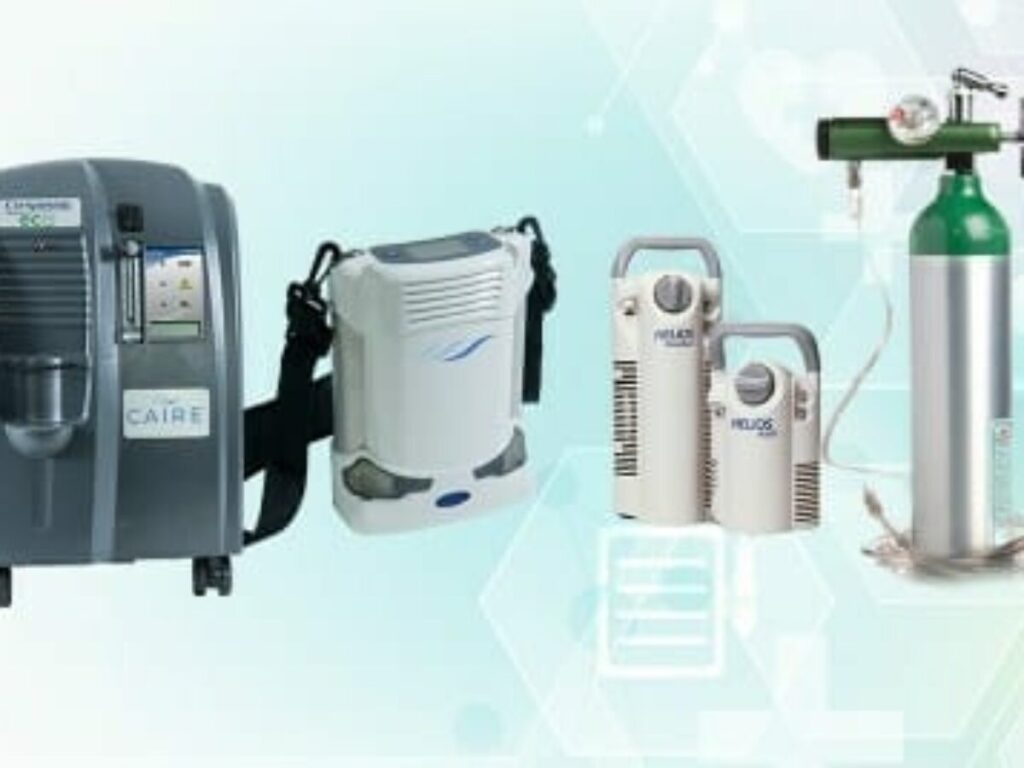
What Should Patients Consider When Choosing Between CPAP and Oxygen Machines?
The choice between CPAP and oxygen therapy depends on your medical diagnosis and specific respiratory condition. Your doctor will determine whether you have airway obstruction during sleep or low blood oxygen levels through tests like sleep studies or pulse oximetry.
Key Therapy Selection Criteria
Your symptoms provide important clues about which device you need:
- Loud snoring, witnessed breathing pauses, and excessive daytime sleepiness typically indicate CPAP therapy for sleep apnea.
- Shortness of breath, chronic cough, and low oxygen saturation readings suggest a need for oxygen therapy.
Lifestyle factors also play a significant role in deciding which respiratory device is right for you:
- Portability needs: If you’re an active person who travels frequently or has a busy lifestyle, lightweight and portable options may be necessary.
- Noise tolerance: Some users find the operational sounds produced by CPAP machines disruptive, so it’s important to consider your sensitivity to noise.
- Maintenance commitment: Both CPAP and oxygen machines require regular cleaning, filter changes, and equipment checks. Make sure you’re willing to invest time in maintaining the device.
- Insurance coverage: Different therapies may have varying coverage requirements and out-of-pocket costs. Check with your insurance provider to understand what is covered.
The Role of Professional Guidance
Proper selection and fitting of respiratory devices are crucial for patient comfort and compliance. Respiratory therapists can assist in adjusting mask styles, pressure settings, or oxygen flow rates to optimize the effectiveness of therapy. They also provide training on how to operate the equipment and troubleshoot common issues.
It’s important to remember that self-diagnosis or switching therapies without consulting a medical professional can have negative consequences. Using the wrong device may worsen your condition or lead to new health complications.



